1. Overview
Robert II (Robert StewartEnglish; 2 March 1316 - 19 April 1390) was the King of Scots from 1371 until his death in 1390, and the first monarch of the House of Stewart. The son of Walter Stewart, 6th High Steward of Scotland, and Marjorie Bruce, who was the daughter of King Robert the Bruce, Robert II ascended to the throne at the age of 55 following the death of his uncle, David II of Scotland. His reign was characterized by a significant delegation of power to his sons and various earls, a style of governance that initially brought stability and prosperity to the kingdom. However, his later years saw a decline in his personal authority amidst border conflicts with England and intense political maneuvering among his sons, ultimately leading to a loss of direct control over the government. He died at Dundonald Castle and was buried at Scone Abbey.
2. Early Life and Background
Robert II's early life was marked by his unique position as a grandson of Robert I of Scotland and his inheritance of the prestigious title of High Steward of Scotland, which laid the foundation for his eventual kingship.
2.1. Parentage and Succession Rights
Born on 2 March 1316, Robert Stewart was the only child of Marjorie Bruce, King Robert I's daughter, and Walter Stewart, 6th High Steward of Scotland. His mother, Marjorie, died shortly after his birth, likely in 1317, due to a riding accident. His father, Walter, passed away on 9 April 1327, at which point the orphaned Robert, then eleven years old, inherited the title of High Steward of Scotland.
The question of succession was complex during his early life. Edward Bruce, Robert I's younger brother, was initially the heir presumptive. However, Edward died without legitimate children in the Battle of Faughart near Dundalk, Ireland, on 14 October 1318. Following this, the Parliament of Scotland hastily convened in December 1318 and decreed that Marjorie's infant son, Robert Stewart, would be the heir presumptive should the king die without a male successor. This arrangement was superseded on 5 March 1324, with the birth of David II of Scotland, a son to King Robert I and his second wife, Elizabeth de Burgh. Despite this, a Parliament held at Cambuskenneth in July 1326 reinstated Robert Stewart into the line of succession, stipulating that he would inherit the crown if David II died childless. This restoration of his status was accompanied by significant grants of land in Argyll, Roxburghshire, and the Lothians. Upon King Robert I's death in 1329, his five-year-old son ascended to the throne as David II, under the guardianship of Thomas Randolph, 1st Earl of Moray.
2.2. Family and Ancestry
The Stewart family name itself derives from the hereditary position of Lord High Steward, a role first appointed by David I of Scotland in 1150 to Walter Fitzalan. This designation was passed down through generations, eventually becoming the family's surname. Later, Mary, Queen of Scots, would alter the spelling to "Stuart" to align with French linguistic preferences.
Robert II's ancestry is deeply intertwined with the Scottish monarchy and nobility. His paternal lineage traces back through a line of High Stewards, including his father, Walter Stewart, 6th High Steward of Scotland, and his grandfather, James Stewart, 5th High Steward of Scotland. On his maternal side, he was the grandson of Robert I of Scotland and Isabella of Mar, connecting him directly to the Bruce dynasty. This dual lineage from both the powerful High Stewards and the reigning Bruce monarchs solidified his claim to the Scottish throne.
3. Early Career and Conflicts
Before his ascension to the throne, Robert II played a crucial role in Scottish politics and military affairs, particularly during the turbulent period of the Scottish Wars of Independence.
3.1. High Steward of Scotland
Upon the death of his father, Walter Stewart, on 9 April 1327, Robert inherited the prestigious and influential office of High Steward of Scotland. As an orphaned eleven-year-old, he was initially placed under the guardianship of his uncle, Sir James Stewart of Durrisdeer. Sir James, along with Thomas Randolph, 1st Earl of Moray, and William Lindsey, the Archdeacon of St Andrews, were appointed as joint guardians of the kingdom, reflecting the significant responsibilities associated with the High Steward position even before Robert reached adulthood.
3.2. Wars of Independence and Regency
The accession of David II in 1329 reignited the Second War of Scottish Independence, which directly threatened Robert's position as heir. In 1332, Edward Balliol, son of the deposed John Balliol, launched an invasion of Scotland with the support of Edward III of England and the "disinherited" Scottish nobles-those who had lost their lands under Robert I. Balliol's forces inflicted severe defeats on the Bruce loyalists at the Battle of Dupplin Moor on 11 August 1332 and again at the Battle of Halidon Hill on 19 July 1333. The seventeen-year-old Robert participated in the Battle of Halidon Hill.
Following these defeats, Robert's estates in western Scotland were overrun by Balliol, who granted them to David III Strathbogie, the titular Earl of Atholl. Robert, however, evaded capture and found refuge with King David II at Dumbarton Castle. In May 1334, with the situation looking dire for the House of Bruce, David II sought safety in France. Robert and John Randolph, 3rd Earl of Moray, were then appointed as joint guardians of the kingdom. Robert actively worked to reclaim his lands in western Scotland.
The Bruce resistance faced further challenges when Randolph was captured by the English in July 1335. This led Robert to submit to Balliol and Edward III in September 1335, relinquishing his guardianship by early December. The Bruce cause seemed on the verge of collapse until Sir Andrew Moray of Bothwell emerged as a potent war leader. Moray, who had been captured in 1332 and ransomed in 1334, immediately laid siege to Dundarg Castle in Buchan, which fell on 23 December 1334. He was appointed guardian during the winter of 1335-1336 while besieging Cupar Castle in Fife. After Moray's death at his castle in Avoch in 1338, Robert resumed the guardianship. Moray's campaigns, coupled with Edward III's failure in the six-month siege of Dunbar Castle, effectively ended any chance of Edward III gaining full and lasting control over southern Scotland. Many of Balliol's key supporters defected to the Bruce side, and major English garrisons began to fall to the Scots, including Cupar in spring or summer 1339, Perth in June 1339 (taken by combined forces of Sir William Douglas, Lord of Liddesdale, Robert Stewart, and Maurice Murray of Drumsargard), and Edinburgh in April 1341 (taken by stratagem by William Douglas of Liddesdale).
John Randolph was released from English custody in a prisoner exchange in 1341 and visited David II in Normandy before returning to Scotland. David II, however, harbored a deep mistrust of Robert Stewart, who held powerful positions as heir presumptive and guardian of Scotland, and favored Randolph. By early June 1341, the kingdom appeared stable enough for David II to return, though his nobles, while fighting for the Bruce cause, had significantly increased their own power bases. On 17 October 1346, Robert accompanied David into battle at the Battle of Neville's Cross. Many Scottish nobles, including Randolph, perished, and David II was wounded and captured, while Robert and Patrick, Earl of March, reportedly fled the field.
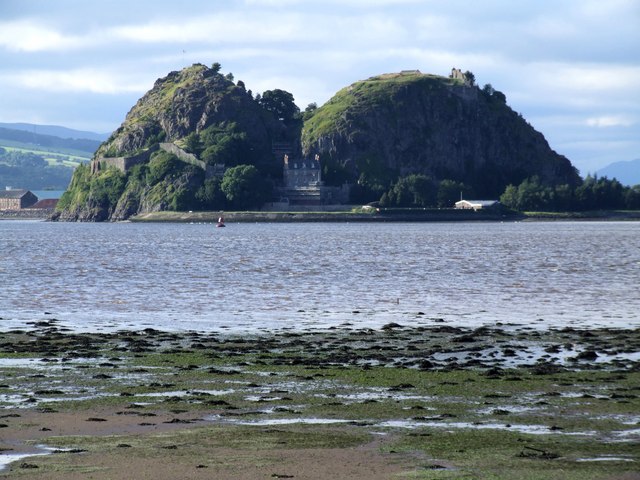
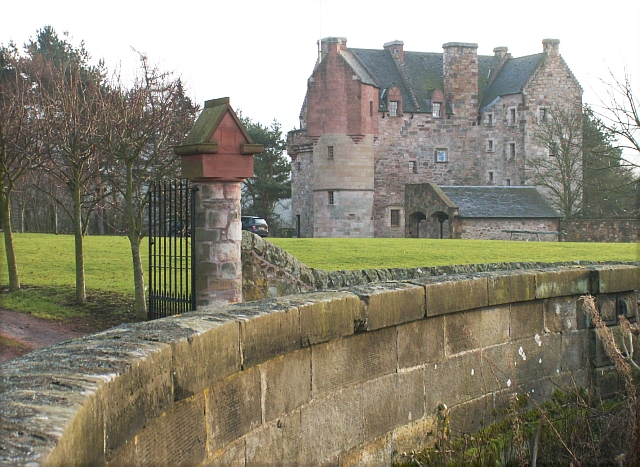
3.3. King David II's Captivity and Ransom Negotiations
With King David II imprisoned in England and Randolph dead, the guardianship of Scotland once again fell to Robert. In 1347, Robert took a crucial step to secure the future of his lineage by petitioning Pope Clement VI for a papal dispensation to allow a canon law marriage to Elizabeth Mure. This dispensation was necessary to legitimize their four sons-John, Earl of Carrick (the future King Robert III); Walter, Lord of Fife (died 1362); Robert (the future Duke of Albany); and Alexander, Lord of Badenoch (and future Earl of Buchan)-and six daughters. The petition, dated 22 November 1347, was supported by the kings of France and Scotland, and several bishops, including William of St. Andrews, William of Glasgow, William of Aberdeen, Richard of Dunkeld, Martin of Argyle, Adam of Brechin, and Maurice of Dunblane. It stated that Robert Stewart, Lord of Stragrifis and the king's nephew, had first known Isabella Boutellier and then, unknowingly due to kinship, Elizabeth Mure, who was also related to Robert in the fourth degree of kindred. They had lived together for some time and had many children. The petition requested the Pope to grant a dispensation for Robert and Elizabeth to intermarry and declare their offspring legitimate, noting the children were "fair to behold" (aspectibus gratiose). The dispensation was to be granted by the diocesan, who would also decide on the founding of one or more chapelries by Robert.
Despite his captivity, David II maintained influence in Scotland. Robert's guardianship was briefly removed by Parliament and given jointly to the Earls of Mar and Ross and the Lord of Douglas, but this arrangement was short-lived. Robert was re-appointed guardian by the Parliament in February 1352. During this Parliament, the paroled David II presented the conditions for his release to Robert and the members of the Three Estates. These terms did not demand a ransom but required the Scots to name the English prince John of Gaunt as heir presumptive. The Council rejected these terms, with Robert vehemently opposing a proposal that threatened his right of succession. With no other option, David II returned to captivity. The English chronicler Henry Knighton recorded that "the Scots refused to have their King unless he entirely renounced the influence of the English, and similarly refused to submit themselves to them. And they warned him that they would neither ransom him nor allow him to be ransomed unless he pardoned them for all their acts and injuries that they had done, and all the offences that they had committed during the time of captivity, and he should give them security for that, or otherwise, they threatened to choose another king to rule them."
By 1354, ongoing negotiations for David's release reached a stage where a proposal for a ransom payment of 90,000 marks to be repaid over nine years, guaranteed by 20 high-ranking hostages, was agreed upon. However, this understanding was disrupted by Robert in 1355 when he committed the Scots to a French action against the English. The capture of Berwick-upon-Tweed by the Scots, combined with the presence of French forces on English soil, prompted Edward III to act. In January 1356, Edward led his forces into southeastern Scotland, burning Edinburgh and Haddington and much of the Lothians in a campaign known as the "Burnt Candlemas."
After Edward's victory over France in September 1356, the Scots resumed negotiations for David's release, culminating in the Treaty of Berwick in October 1357. Its terms stipulated that in exchange for David's freedom, a ransom of 100,000 marks would be paid in annual installments over ten years. However, only the first two payments were completed initially, with no further payments until 1366. This failure to honor the treaty conditions allowed Edward III to continue pressing for a Plantagenet successor to David, terms that were rejected by the Scottish Council and likely by Robert himself. This pressure may have been the cause of a brief rebellion in 1363 involving Robert and the Earls of Douglas and March. Despite French inducements, David II remained at peace with England throughout the remainder of his reign.
4. Reign as King of Scots
Robert II's reign as King of Scots saw him consolidate the Stewart dynasty's power, implement administrative policies, and navigate complex challenges both domestically and internationally.
4.1. Accession and Consolidation of Power
David II died childless on 22 February 1371, and Robert II succeeded him. David was buried almost immediately at Holyrood Abbey, but an armed protest by William, Earl of Douglas, delayed Robert II's coronation until 26 March 1371. The precise reasons for this incident remain unclear, but it may have stemmed from a dispute regarding Robert's right of succession or been directed against George Dunbar, 10th Earl of March (also known as Earl of Dunbar) and the southern justiciar, Robert Erskine. The situation was resolved when Robert agreed to marry his daughter Isabella to Douglas's son, James, and appointed Douglas to replace Erskine as justiciar south of the Forth. Robert's accession also led to some office changes, notably John Dunbar, George Dunbar's brother, losing his claim on Fife, and Sir Thomas Erskine, Robert Erskine's son, losing control of Edinburgh Castle.
The Stewart family significantly expanded their landholdings and influence during Robert's early reign. The earldoms of Fife and Menteith were granted to Robert's second surviving son, also named Robert. His fourth son, Alexander, received the earldoms of Buchan and Ross, along with the lordship of Badenoch. The earldoms of Strathearn and Caithness went to David, the eldest son from Robert's second marriage. Robert's daughters were strategically married to powerful lords, including John of Islay, Lord of the Isles, John Dunbar (Earl of Moray), and James, who would become the 2nd Earl of Douglas. Furthermore, Robert's eldest son and heir, John, Earl of Carrick, was made keeper of Edinburgh Castle, while Robert, Earl of Fife, was given charge of Stirling Castle. Alexander, Lord of Badenoch and Ross (later Earl of Buchan), became the king's justiciar and lieutenant in the northern parts of the kingdom. This strategic build-up of Stewart family power generally did not cause resentment among the senior magnates, as the king typically did not threaten their existing territories or local rule, and individuals whose titles were transferred were usually well compensated.
This style of kingship, characterized by delegating authority to his powerful sons and earls, differed significantly from his predecessor David II's more centralized approach. Robert's strategy proved effective for the first decade of his reign, allowing him to exert influence over eight of the fifteen earldoms, either directly through his sons or through the strategic marriages of his daughters to powerful lords.
In 1373, Robert ensured the future security of the Stewart dynasty by having Parliament pass entailments regarding the succession. At this time, none of his sons had heirs, making it necessary to devise a system that precisely defined the circumstances under which each of his sons could inherit the crown, though this system would not take precedence over normal succession by primogeniture. By 1375, the king commissioned the poet John Barbour to write The Brus, a historical poem intended to bolster the public image of the Stewarts as the genuine heirs of Robert I. The poem highlighted the patriotic actions of both Sir James, the Black Douglas and Walter the Steward, the king's father, in their unwavering support of Bruce.
Robert's rule during the 1370s saw the country's finances stabilize and significantly improve. This was partly due to a flourishing wool trade, reduced demands on the public purse, and the cessation of ransom payments to England following the death of Edward III of England. Unlike David II, whose kingship was predominantly based in the Lowlands, Robert did not restrict his attention to one sector of his kingdom. He frequently visited the more remote areas of the north and west, fostering strong relationships with his Gaelic lords. He grew up in his ancestral lands in the west and was completely at ease with the Gaelic language and culture, maintaining potent relationships with Gaelic lords in the Hebrides, upper Perthshire, and Argyll. Throughout his reign, Robert spent long periods in his Gaelic heartlands. Complaints at the time in Lowland Scotland seemed to be influenced by the view that the king was overly involved in Gaelic concerns.
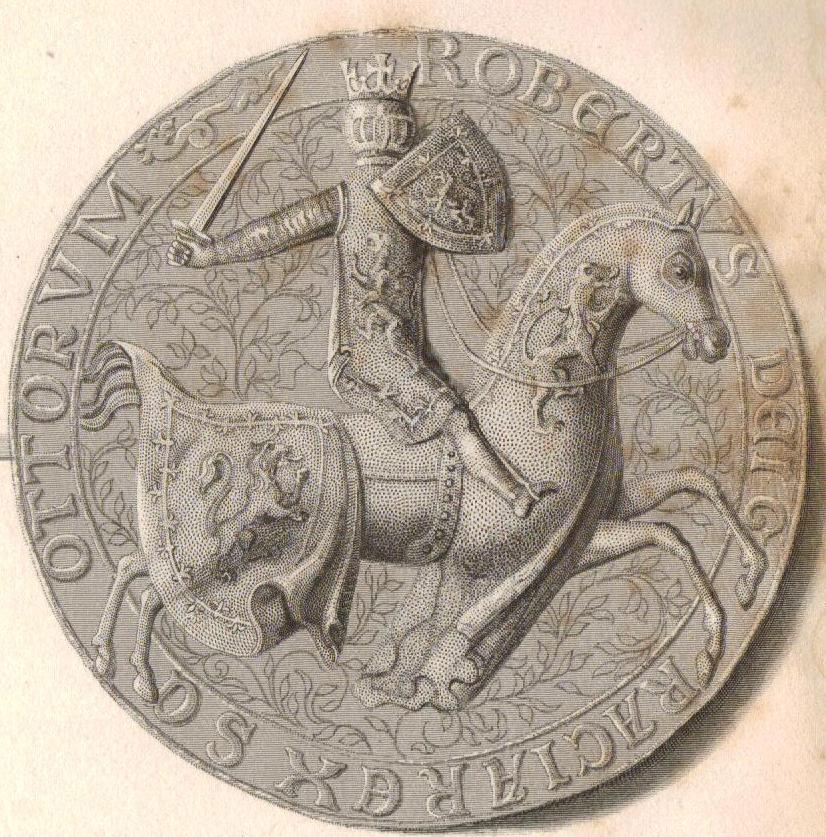
4.2. Rule, Delegation of Power, and Challenges
Robert ruled over a country that still contained English enclaves within its borders, and some Scots continued to pledge allegiance to the King of England. Important castles such as Berwick, Jedburgh, Lochmaben, and Roxburgh were held by English garrisons, controlling southern Berwickshire, Teviotdale, and large areas in Annandale and Tweeddale. In June 1371, Robert agreed to a defensive treaty with the French. Although there were no outright hostilities during 1372, the English garrisons were reinforced and placed on high alert.
Attacks on the English-held zones, almost certainly with Robert's backing, began in 1373 and intensified between 1375 and 1377. This suggested that a central decision had likely been made to escalate the conflict, moving beyond the previous small-scale raids by border barons. In 1376, the Earl of March successfully recovered Annandale but then found his actions constrained by the Bruges Anglo-French truce.
In his dealings with Edward III, Robert publicly blamed his border magnates for the escalating attacks on the English zones. Nevertheless, the Scots retained the recaptured lands, often distributing them among minor lords to secure their interest in preventing English re-possession. Despite Robert's further condemnations of his border lords, all indications were that he supported the growing successful Scottish militancy following Edward III's death in 1377. In a charter dated 25 July 1378, the king decreed that Coldingham Priory would no longer be a daughter house of the English Durham Priory but would instead be attached to Dunfermline Abbey.
In early February 1384, the Scots, apparently unaware of an Anglo-French truce concluded on 26 January 1384 that included them in the cease-fire, launched an all-out attack on the English zones, successfully reclaiming Lochmaben Castle and Teviotdale. John of Gaunt led a retaliatory English attack that reached Edinburgh, where the burgesses bribed him to spare the town, though Haddington was destroyed. Carrick and James, Earl of Douglas (whose father William had died in April), sought a retaliatory strike for Gaunt's raid. Robert, however, may have concluded that since the French had reneged on a previous agreement to send assistance in 1383 and then entered a truce with England, any further military action would be met with retaliation and exclusion from the forthcoming Boulogne peace talks. On 2 June 1384, Robert resolved to send Walter Wardlaw, Bishop of Glasgow, to the Anglo-French peace talks. Despite this, Carrick ignored the directive and permitted raids into northern England. Nevertheless, by 26 July, the Scots were included in the truce, which was set to expire in October. Robert called a Council in September, likely to determine how to proceed once the truce concluded.

4.3. Loss of Authority and Later Years
Robert's son, John, Earl of Carrick, had become the foremost Stewart magnate south of the Forth, mirroring the influence of Alexander, Earl of Buchan, in the north. Alexander's activities and methods of royal administration, often enforced by Gaelic mercenaries, drew significant criticism from northern earls and bishops, as well as from his younger half-brother David Stewart, Earl of Strathearn. These complaints damaged the king's standing within the Council, leading to criticism of his perceived inability to curb Buchan's actions.
The growing differences between Robert and the Carrick faction regarding the conduct of the war, coupled with the king's continued failure or unwillingness to address Buchan's disruptive activities in the north, culminated in a major political upheaval in November 1384. During this Council meeting, the king's authority to govern was effectively removed, and Carrick was appointed as lieutenant of the kingdom-a clear coup d'état. With Robert sidelined, there was no longer any impediment to war. In June 1385, a force of 1,200 French soldiers joined the Scots in a campaign that involved the Earl of Douglas and two of Robert's sons, John, Earl of Carrick, and Robert, Earl of Fife. The skirmishes resulted in small gains, but a quarrel between the French and Scottish commanders led to the abandonment of an attack on the important castle of Roxburgh.
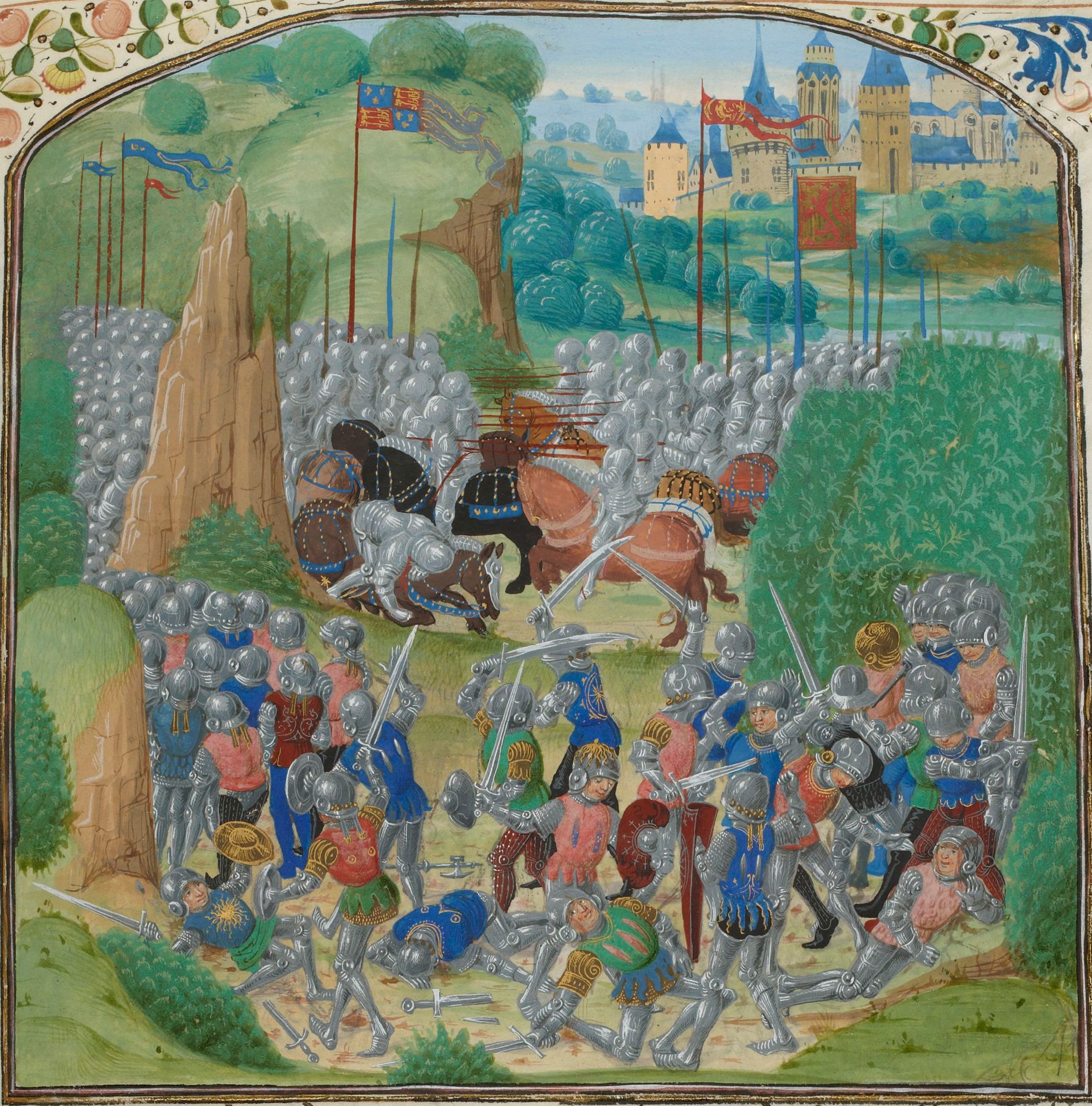
The Scottish victory over the English at the Battle of Otterburn in Northumberland in August 1388 marked a turning point that set in motion Carrick's eventual fall from power. One of the Scottish casualties was Carrick's close ally, James, Earl of Douglas. Douglas died without an heir, which led to various claims upon his title and vast estates. Carrick supported Malcolm Drummond, the husband of Douglas's sister, while Fife sided with the successful claimant, Sir Archibald Douglas, Earl of Wigtown and Lord of Galloway, who possessed an entail on the Douglas estates. Fife, now bolstered by his powerful Douglas ally, along with those who supported the king, orchestrated a counter-coup at the December Council meeting. The guardianship of Scotland was transferred from Carrick (who had recently suffered a severe injury from a horse-kick) to Fife. Many also approved of Fife's stated intention to properly address the lawlessness in the north, particularly the disruptive activities of his younger brother, Buchan. Fife subsequently relieved Buchan of his offices as lieutenant of the north and justiciar north of the Forth, with the latter role being given to Fife's son, Murdoch Stewart. Robert II toured the northeast in late January 1390, possibly to reinforce the changing political landscape in the north following Buchan's removal from authority.
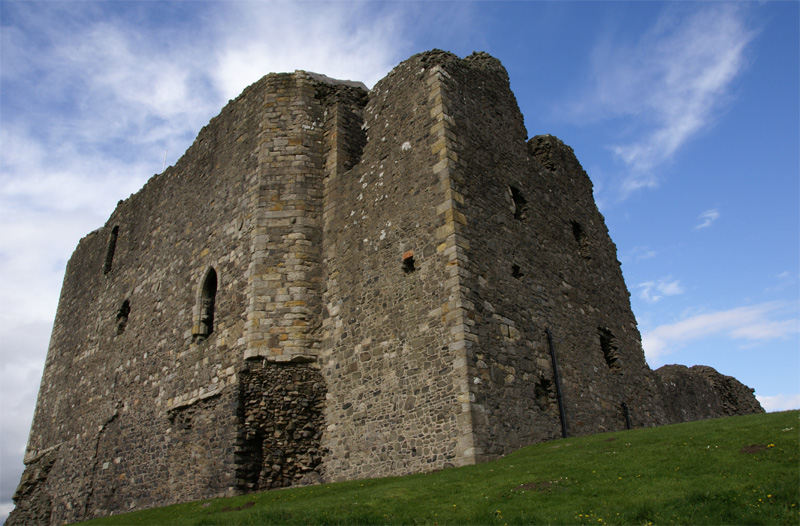
Robert II, who was described as being very ill and almost blind in his later years, returned to Dundonald Castle in Ayrshire in March 1390. He died there on 19 April 1390 and was buried at Scone Abbey on 25 April.
5. Marriages and Issue
Robert II had two canonical marriages and numerous illegitimate children, contributing significantly to the expansion of the Stewart dynasty.
5.1. First Marriage and Children
Robert II first married Elizabeth Mure (died 1355), daughter of Sir Adam Mure of Rowallan. Their initial marriage, around 1348, was deemed uncanonical. Therefore, they remarried in 1349 after receiving a papal dispensation in 1347, which also legitimized their children born before the second marriage.
From this union, ten children reached adulthood:
- John (1337 - 1406), who succeeded his father as King Robert III. He married Anabella Drummond.
- Walter (c. 1338 - 1362), who became Lord of Fife and married Isabella MacDuff, Countess of Fife.
- Robert (1340 - 1420), who became Earl of Fife and later Duke of Albany in 1398. He married Margaret Graham, Countess of Menteith in 1361, and his second wife, Muriella Keith, in 1381.
- Alexander Stewart, Earl of Buchan (1342/3 - 1405), famously known as "the Wolf of Badenoch". He married Euphemia of Ross in 1382.
- Margaret, who married John of Islay, Lord of the Isles.
- Marjorie, who married John Dunbar, Earl of Moray, and later Sir Alexander Keith.
- Elizabeth, who married Thomas de la Hay, Lord High Constable of Scotland.
- Isabel (died 1410), who first married James Douglas, 2nd Earl of Douglas (died 1388), and then John Edmonstone of that Ilk in 1389.
- Johanna (Jean), who married Sir John Keith (died 1375), then John Lyon, Lord of Glamis (died 1383), and finally Sir James Sandilands. Through her second marriage, she is an ancestor of Elizabeth Bowes-Lyon, the Queen Mother.
- Katherine, who married Sir Robert Logan of Grugar and Restalrig, Lord High Admiral of Scotland.
5.2. Second Marriage and Children
In 1355, Robert married his second wife, Euphemia de Ross (died 1387), who was the daughter of Hugh, Earl of Ross and the widow of John Randolph, 3rd Earl of Moray.
They had four children:
- David Stewart, Earl of Strathearn (born c. 1356 - died before 1389), who also held the title of Earl of Caithness.
- Walter Stewart, Earl of Atholl (born c. 1360), who was beheaded in Edinburgh in 1437 for his involvement in the assassination of King James I of Scotland.
- Elizabeth, who married David Lindsay, 1st Earl of Crawford in 1380.
- Egidia, who married William Douglas of Nithsdale in 1387.
5.3. Illegitimate Children
King Robert II also had a number of illegitimate children.
By Mariota de Cardeny, daughter of Sir John Cardeny and widow of Alexander Mac Naugthon:
- Alexander Stewart of Inverlunan
- Sir John Stewart of Cardeny
- James Stewart of Abernethy and Kinfauna
- Walter Stewart
By Moira Leitch (according to tradition):
- Sir John Stewart, Sheriff of Bute (1360 - 1445/9), who is an ancestor of the Marquesses of Bute.
Other issue born by unknown women:
- John Stewart, Lord of Burley (killed 1425)
- Alexander Stewart, canon of Glasgow
- Sir Alexander Stewart of Inverlunan
- Thomas Stewart, Archdeacon of St Andrews and Dean of Dunkeld.
- James Stewart of Kinfauns
- Walter Stewart
- Maria or Mary Stewart, who was the wife of Sir John de Danielstoun and mother of Sir Robert de Danielstoun of that Ilk, an ancestor of the Cunningham of Kilmaurs and Maxwell of Calderwood families.
6. Historiography and Assessment
The reign of Robert II has been subject to various historical interpretations, with scholarly assessments evolving over time from initial criticisms to more nuanced and balanced views.
Early historians like Gordon Donaldson (1967) and Ranald Nicholson (1974) offered critical appraisals. Donaldson admitted to a lack of comprehensive knowledge about Robert's reign at the time of his writing, though he noted that early chroniclers contemporary with Robert found little to criticize. Donaldson described Robert's career, both before and after his ascension, as "undistinguished," asserting that his reign "did nothing to add lustre to it." He also debated the legality of Robert's canon law marriage to Elizabeth Mure, acknowledging that while the Acts of Succession in 1371 and 1372 legally settled the matter, they did not end the generational feud between the descendants of Elizabeth Mure and Euphemia Ross. Donaldson further suggested that Robert's experiences in battles like Halidon Hill and Neville's Cross made him wary of sanctioning military expeditions against the English, implying that any such actions by his barons were concealed from him. Similarly, Nicholson characterized Robert's reign as deficient, attributing internal strife to his perceived lack of governance skills. Nicholson also asserted that the Earl of Douglas was appeased following his armed demonstration just before Robert's coronation, linking this to doubts surrounding the legitimacy of Robert's sons with Elizabeth Mure.
In contrast, modern historians such as Stephen Boardman (2007), Alexander Grant (1984 and 1992), and Michael Lynch (1992) offer a more balanced and often positive re-evaluation of Robert II's life and reign. They depict a kingdom that became wealthier and more stable, particularly during the first decade of his rule. Boardman explains that Robert II was subjected to negative propaganda throughout his career. As High Steward, David II's followers denigrated his conduct during his lieutenancies, describing them as "tyranny." Later, as King, supporters of his son John, Earl of Carrick, portrayed Robert as a monarch lacking drive and accomplishments, weighed down by age and unfit to govern.
Robert II's strong association with Gaelic Scotland also drew criticism. Having grown up in his ancestral lands in the west, he was fluent in the Gaelic language and comfortable with its culture, fostering strong relationships with the Gaelic lords in the Hebrides, upper Perthshire, and Argyll. Throughout his reign, Robert spent long periods in his Gaelic heartlands, and contemporary complaints from Lowland Scotland appear to have been influenced by the perception that the king was overly preoccupied with Gaelic concerns. Boardman also suggests that much of the negative views held of Robert II originate from the writings of the French chronicler Jean Froissart, who famously recorded that "[the king] had red bleared eyes, of the colour of sandalwood, which clearly showed that he was no valiant man, but one who would remain at home than march to the field." Conversely, early Scottish chroniclers, such as Andrew of Wyntoun and Walter Bower (both of whom utilized a source nearly contemporary with Robert II), as well as later 15th and 16th-century Scottish chroniclers and poets, portrayed "Robert II as a Scottish patriotic hero, a defender of the integrity of the Scottish kingdom, and as the direct heir to Robert I."
Grant (1992) acknowledges that Robert II's reign, in terms of both foreign and domestic policy, was "not so unsuccessful." Regarding William, Earl of Douglas's armed demonstration before Robert's coronation, Grant does not believe it was a protest against Robert's legitimate right to the throne. Instead, he views it as an assertion that royal patronage should not continue as it had under David II, and that the demonstration was aimed at Robert and Thomas Erskine, who held the castles of Edinburgh, Stirling, and Dumbarton from Robert's predecessor. Grant also seriously questioned the dependability of Froissart's writings as an accurate source for Robert II's reign. Grant suggests that the influential magnate coalitions, particularly those led by Carrick, undermined the king's position and manipulated the Council of November 1384 to strip Robert II of any real power. However, Grant gives little weight to the assertion of Robert's senility, suggesting that the deposition of Carrick in 1388 and the subsequent decision to join the Anglo-French truce of 1389 were both instigated by Robert II himself. Despite this, authority was not returned to Robert II but passed to Carrick's younger brother, Robert, Earl of Fife, once again placing the king at the disposition of one of his sons. Nevertheless, the unknown source relied upon by both Wyntoun and Bower pointed out that Fife deferred to his father on affairs of state, emphasizing a difference in styles between the guardianships of his two sons.
Michael Lynch highlights that Robert II's reign from 1371 until Carrick's lieutenancy in 1384 was marked by continued prosperity and stability-a period Abbot Bower described as one of "tranquillity, prosperity and peace." Lynch suggests that the troubles of the 1450s between James II and the Douglases (which some historians interpreted as a legacy of Robert II's policy of encouraging powerful lordships) were, in fact, a continuation of David II's policy of building up local lords in the Marches and Galloway. Robert, according to Lynch, was content with governance and chose to leave the Douglas and Stewart earls undisturbed in their fiefdoms. Lynch proposes that any weakening of the government occurred not before the 1384 coup, but after it, even though the coup itself was rooted in Robert II's perceived favoritism towards his third son, Alexander Stewart, Earl of Buchan, famously known as "the Wolf of Badenoch."
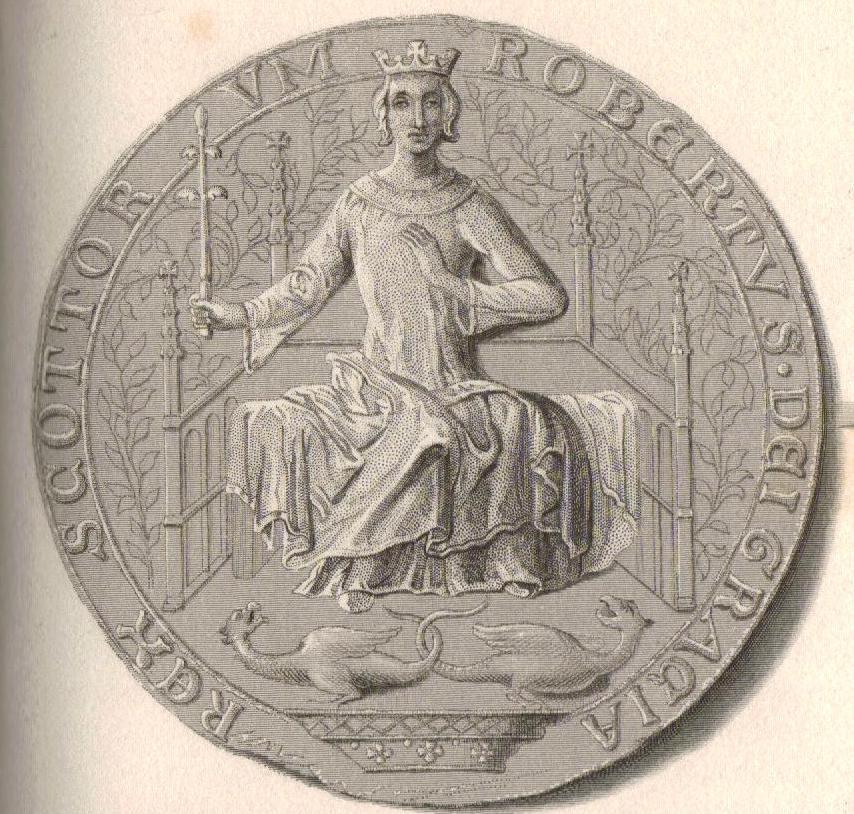
7. Fictional Portrayals
Robert II has been depicted in various historical novels and fictional works, reflecting his place in Scottish history.
- The Three Perils of Man; or, War, women, and witchcraft (1822) by James Hogg. This tale is set during the reign of Robert II, whose "country enjoyed happiness and peace, all save a part adjoining to the borders of England." A portion of the action takes place at Linlithgow Palace, where Robert promises to marry his daughter Margaret Stewart "to the knight who shall take that castle of Roxburgh out of the hands of the English." Margaret adds her own terms: "in case of his attempting and failing in the undertaking, he shall forfeit all his lands, castles, towns, and towers to me." In the absence of volunteers, Margaret herself vows to take the Castle, ultimately defeating Lord Musgrave and his mistress Jane Howard.
- The Lords of Misrule (1976) by Nigel Tranter. This novel covers events from approximately 1388 to 1390, depicting the final years of Robert II's reign and the rise of Robert III of Scotland to the throne. As the elderly king grows "feeble, weary and half-blind," his sons, daughters, and other nobles vie for power, leading to an ungoverned Scotland ravaged by their conflicts. Robert Stewart, Duke of Albany, and Alexander Stewart, Earl of Buchan, are prominently featured characters in this portrayal.
- Courting Favour (2000) by Nigel Tranter. This book follows the career of John Dunbar, Earl of Moray, through the courts of both David II of Scotland and Robert II. John is depicted as a son-in-law to Robert II and serves him as a diplomat.
8. Death
Robert II died on 19 April 1390 at Dundonald Castle in Ayrshire. His burial took place at Scone Abbey on 25 April. Following his death, his eldest son, John, Earl of Carrick, succeeded him as King Robert III of Scotland.